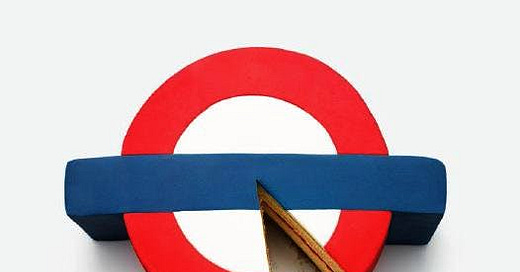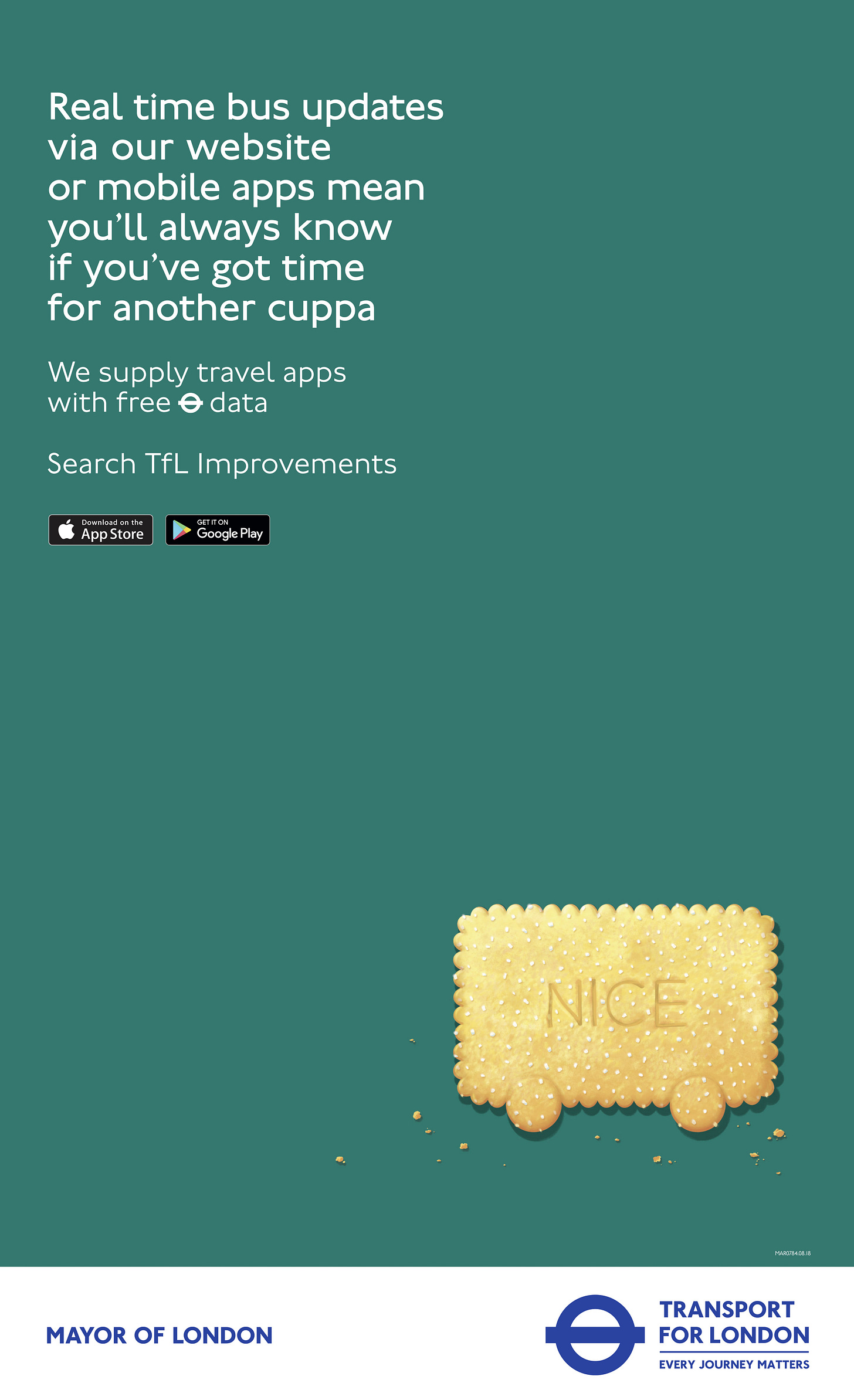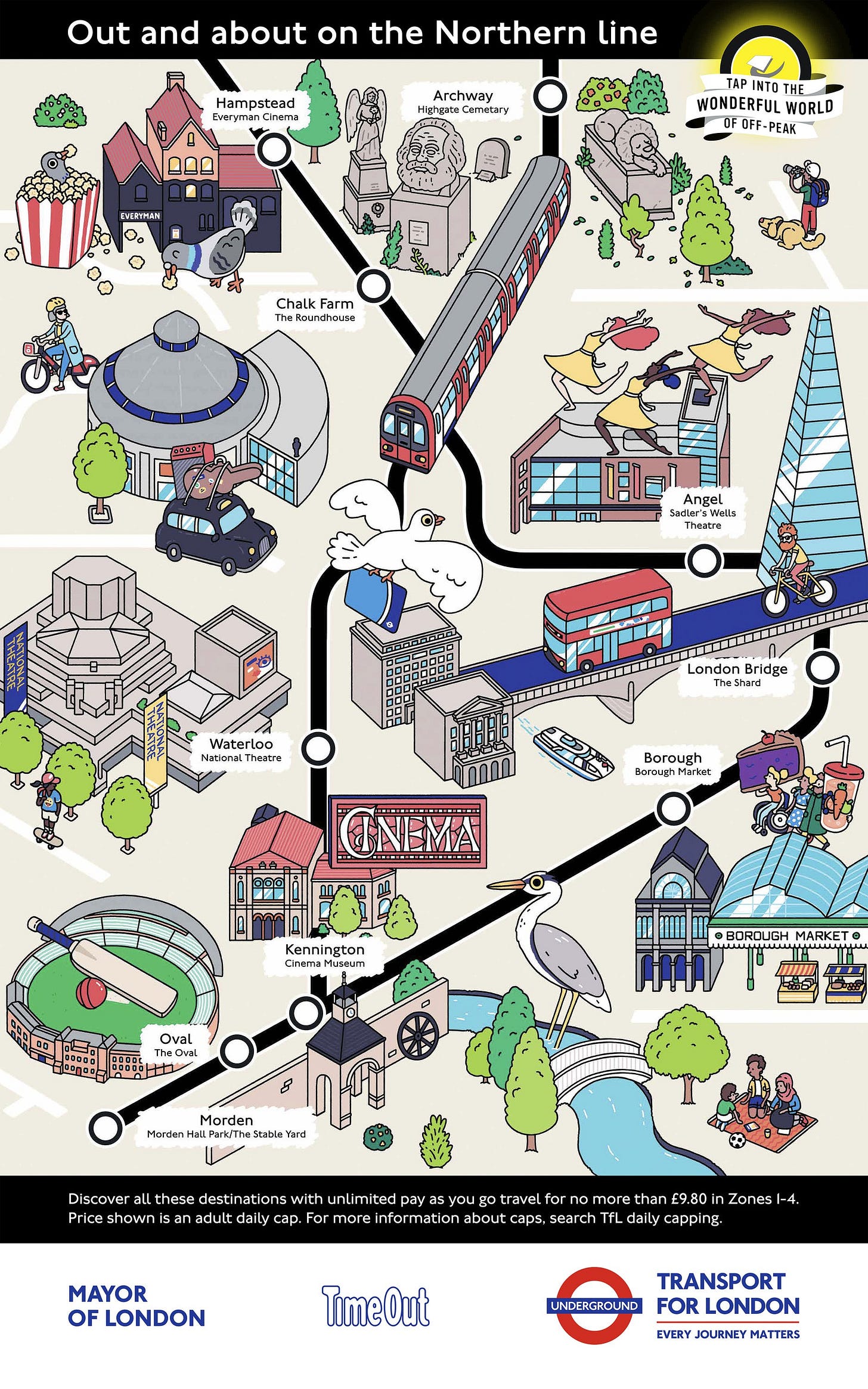You may have seen the story today about Transport for London banning an advert for a West End play because it shows a cake and therefore falls foul of Sadiq Khan’s ban on ‘junk food’ advertising.
What you may not know is that this is not TfL’s first rodeo when it comes to preposterous consequences from puritanical rules. Because TfL’s own advertisements have to comply, the advert shown below from 2016 but would not be permitted today.
In 2019, I used a Freedom of Information request to ask TfL how many of its own adverts it had to edit to abide by its own daft regulations. The documents I received are mind-boggling.
The story begins in late November 2018 when someone at TfL with the mildly sinister job title of Customer Marketing & Behaviour Change Executive realised that her organisation could be caught short by the impending changes. She e-mailed staff requesting a comprehensive review of TfL’s in-house advertisements to weed out any depictions of ‘junk food’ that could violate the new rules and embarrass the Mayor. To be on the safe side, it was decided that ‘junk food’ would not only be scrubbed out of TfL’s adverts on public transport, as the ban required, but from all its marketing materials.
‘Junk food’ is a meaningless term used by activists to mask the full scale of their ambitions. The TfL ban actually applies to all food that is deemed to be high in fat, sugar and/or salt (HFSS). The public is largely unaware of how little fat, sugar and salt needs to be in a product for it to be classified as HFSS. The FOI e-mails reveal that TfL’s staff and their ad agencies were equally ignorant, and so the Behavioural Change Executive gave them a crash course, explaining that ‘foods that you might not automatically view as “junk food” are covered by the ban because of either high fat, salt or sugar content’. She gave yoghurt, pesto, butter, cheese and honey as counter-intuitive examples. She could have given many more.
The message was reinforced a week later with an e-mail that read:
‘For clarity – by junk food we mean anything that contains a high fat, sugar or salt content.’
With palpable incredulity, it continued:
‘This does cover things you may not necessarily deem to be ‘junk food’ so things like jam would be not allowed!’
The first casualty of the purge was a biscuit in an advert for TfL’s bus app (see below). This was sent back to the creatives who designed a new ad from scratch at a cost of £4,820.
A few days later, a Christmas advert designed for Time Out was found to show a moon dressed in icing sugar and holly which, it was noticed, ‘looks like a Christmas pudding (a piece of food)’. This time the fix was easier. In an e-mail to the ad agency, TfL’s Customer Marketing & Behaviour Change Manager (not to be confused with the Customer Marketing & Behaviour Change Executive) told them to ‘just remove the icing sugar and the holly so it is 100% moon, rather than looking like a pudding.’ He then added: ‘I cannot believe I am writing the above sentence!’
Also visible in the same advert were popcorn and nuts. Both were airbrushed out before they could corrupt the minds of vulnerable young people.
There was more drama in the new year when TfL’s ‘cultural maps’ were reviewed. These maps are designed to show tourists what London has to offer at each tube stop. They turned out to be riddled with ‘unhealthy’ food in cartoon form. A list of potential violations was drawn up, including the depiction of a curry at Brick Lane, strawberries and cream at Wimbledon, tea and sandwiches at South Kensington and popcorn at Hampstead Health station. At Borough market, there were people ‘carrying a cake and a fizzy drink’. In Brixton, two people could be clearly seen enjoying a pizza.
This was DEFCON 1. Having been urged to leave no stone unturned, staff flagged up every item of food and drink in the posters, regardless of whether it was ‘junk’ or not. The list of amendments includes the following gems:
‘Hard to tell, but the lady at One Hoe Street appears to be holding a coffee?
‘It looks like the woman in the wheel chair in front of Bow arts trust is being given cake/desert of some sort on a plate.’
‘By Walthamstow central there is a lady selling groceries (looks like just veg, so should be fine)’
‘…there is [sic] three people sitting down on a blanket by the lake and the woman has a drink next to her and either a book or packet of crisps depending on how you interpret it, is it possible to remove these?’
‘By Hyde park corner there is a man having a picnic and it shows a loaf of bread and glass of wine (although alcohol doesn’t apply).’
Of the twelve maps, nine were found to be promoting obesity and had to be changed. Several of them had to undergo multiple edits, including the Northern line map which showed popcorn, a cake, a fizzy drink and something that may or may not have been a packet of crisps. See if you can spot them all.
The District line map was little better, showing not only popcorn, but strawberries, cream and sandwiches.
The cost of editing the maps to make them compliant with TfL’s own rules was £3,400 and it didn’t end there. A further £1,580 was spent covering up an ice cream in a snowman’s hand in an advert promoting the tube’s air conditioning system. £6,355 was spent redesigning the Time Out advert and, as mentioned above, it cost £4,820 to get rid of the biscuit.
In total, the bill for removing food and drink products from TfL’s own advertisements came to £16,155. It was a ludicrous waste of money and everybody involved seems to have regarded it as such, but the rules were being implemented exactly as intended.
In 2019, a company that delivers fresh food to your door had an advert vetoed by TfL because it showed bacon, butter and jam. TfL did not back down after the story hit the news because the ban was always supposed to affect such products. Similarly, it was always designed to affect non-food advertisements, which is why TfL were on the case three months before it took effect.
These outcomes might be ridiculous but they are not accidental. They are what happens when fanaticism becomes normalised. Expect more hilarity when the government introduces a similar nationwide ban online and on television in 2025.









This kind of thing is turning me into Ron Swanson
Sounds insane..